Invited Speakers
Dr. Paresh C Ray
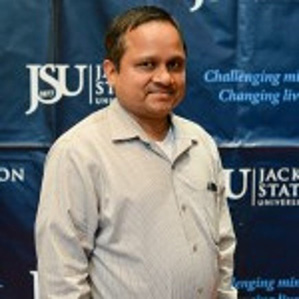 Department of Chemistry and Biochemistry, Jackson State University, Jackson, Mississippi
39217.
Department of Chemistry and Biochemistry, Jackson State University, Jackson, Mississippi
39217.
Designing Novel Nanoplatform for Theranostic Applications of Cancer and Superbugs
Invited Talk: Biomaterials and Biomedical Engineering Session
Abstract: Development of new theranostic materials is becoming increasingly urgent due to the huge threat of cancer and superbugs, which are responsible for more than several million deaths each year in this world. Here, we will discuss our recent report the development of a novel theranostic nanoplatform using two-dimensional graphene oxide, transition metal dichalcogenide (TMD) and hetero-stuctures. We will discuss the design criteria for theranostic nanoplatform which has a capability for targeted identification and synergistic killing of cancer and inactivation of multidrug-resistant superbugs. We will discuss how we have used theranostic nanoplatform for photo thermal therapy (PTT), photodynamic therapy (PDT), and combined therapy of cancer and superbugs.
Dr. Amir Hadadzadeh
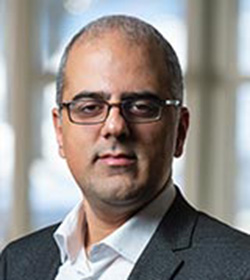 Assistant Professor, Department of Mechanical Engineering, University of Memphis,
Memphis, TN 38152 USA Designing the Next Generation of Advanced Additive Manufactured
Alloys
Assistant Professor, Department of Mechanical Engineering, University of Memphis,
Memphis, TN 38152 USA Designing the Next Generation of Advanced Additive Manufactured
Alloys
Invited Talk: Physics and Chemistry of Nanomaterials Session
Additive manufacturing (AM) as a breakthrough for fabrication of near-net shaped components, plays a revolutionary role in the evolution of advanced materials with enhanced properties.. Developing a cutting-edge AM metals and alloys (e.g. aluminum, steels, stainless steels, and titanium) with superior mechanical properties requires a comprehensive knowledge on how to tailor the hierarchical microstructure to enhance the strengthening mechanisms at different length scales. Such a knowledge is developed through multi-scale characterization of the microstructure of AM materials using sophisticated techniques. As a showcase, the microstructure of an advanced aluminum alloy additively manufactured through SLM process was investigated using advanced characterization techniques, including scanning electron microscopy (SEM), electron backscatter diffraction (EBSD), transmission electron microscopy (TEM) and atom probe tomography (APT). The microstructure of the material consists of hierarchical characteristics, spanning three order of magnitude, where nanometer sized to sub-millimeter scaled features exists in the structure. The results of this study pave the pathway to develop the fundamental knowledge on processing-microstructure-prosperities relationship in AM materials to develop the next generation advanced, strategic and novel materials.
Dr. Ranganathan Gopalakrishnan
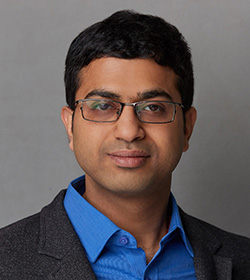 Assistant Professor, Department of Mechanical Engineering, The University of Memphis,
Memphis, TN 38152, USA
Assistant Professor, Department of Mechanical Engineering, The University of Memphis,
Memphis, TN 38152, USA
Room temperature processing of ceramics and polymeric materials using aerosol impaction
methods
Invited Talk: Physics and Chemistry of Nanomaterials Session
Aerosol Deposition (AD) method is a scalable, room temperature and solvent-free route for processing dense ceramic coatings in which sub-10 mm aerosol particles are impacted at speeds 300 – 1000 m/s on diverse substrates (metal/ceramic/glass/plastic) at reduced pressures (~500 Pa). The mechanism of coating formation, termed as room temperature impact consolidation (RTIC), involves the conversion of the kinetic energy of impacting particles to compressive strain energy in the deposited particle fragments, subsequently compacting them into a dense layer for coating to build up at a high rate ~ microns per minute. This method is particularly suitable for producing thin coatings of ceramic materials. The design and quality control of industrial scale coating processes require strict control of the morphology and extent of agglomeration of impacting particles. Challenges in scaling AD to industrial scale include the creation of steady source of micron-sized aerosol particles, design of supersonic nozzles to achieve desired impact velocity of particles and pre-treatment of powders to generate particles that will maximize the efficiency of deposition. The merits and shortcomings of the electrospray for coating chitosan are discussed with possible improvements for future developments. In this presentation, I will present the current work in our lab to create coatings of ceramic materials such as titanium dioxide, hydroxyapatite on diverse substrates motivated by energy and biomedical applications.
Talks from the Industry Groups
Dr. Vivek Pawar
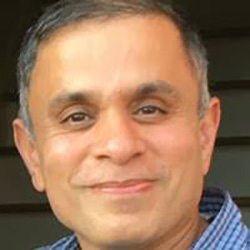 Senior Director, New Product Development Research and Laboratories
Senior Director, New Product Development Research and Laboratories
vivek.pawar@smith-nephew.com
Title of Talk: Materials in Orthopaedics: Past, Present and Future
Invited Talk: Biomaterials and Biomedical Engineering Session
Through the lens of hip arthroplasty, I will give a brief overview of materials used in Orthopaedics. Most of these materials were adopted from other engineering industries, and have fulfilled the promise of giving patients pain free and active life. However, with the confluence of increased patient expectations, availability of novel biological treatments, ever increasing regulatory requirements and cost pressures, enabling manufacturing technologies, and robotic assisted surgeries, an interdisciplinary approach to problem solving is becoming increasingly important in the medical device industry. In such an approach, materials scientists/engineers with their fundamental understanding of structure property relationships will continue to play an integral role.
Anshu Pradhan, Ph.D.
Vice President, Process Engineering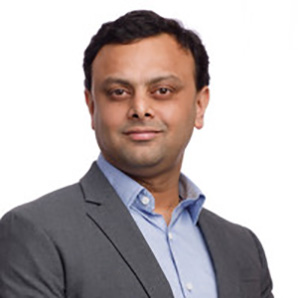
view | Create Delightful Human Environments
12380 Kirk Road, Olive Branch, MS 38654
O +1.662.892.3425 | M +1.408.705.6632
anshu.pradhan@view.com
Title of Talk: View Dynamic Glass – Using innovative Materials Science to create Smart Buildings
Invited Talk: Physics and Chemistry of Nanomaterials Session
How do you design a product to improve Human health and wellness while making buildings
more energy efficient? View has used innovative Materials science to transform the
traditional window into a smart window which can change its optical properties on-demand.
The windows can change from being clear to a dark tint to anywhere in between. When
combined with an intelligent algorithm, the windows can tint when there is excessive
glare or heat coming into the building to create the most comfortable interior space
for any building in any climate at any time. View Dynamic glass brings more natural
light into buildings and allows users to see outside all times which has positive
impacts on our health. By reducing the heat coming into buildings View glass improves
energy efficiency of buildings by over 20%.
In this talk we will explore the power of using Materials science to understand the
unique properties of materials, designing new materials and then integrating these
materials into a product that has capabilities that may have been inconceivable when
studying the individual materials.
